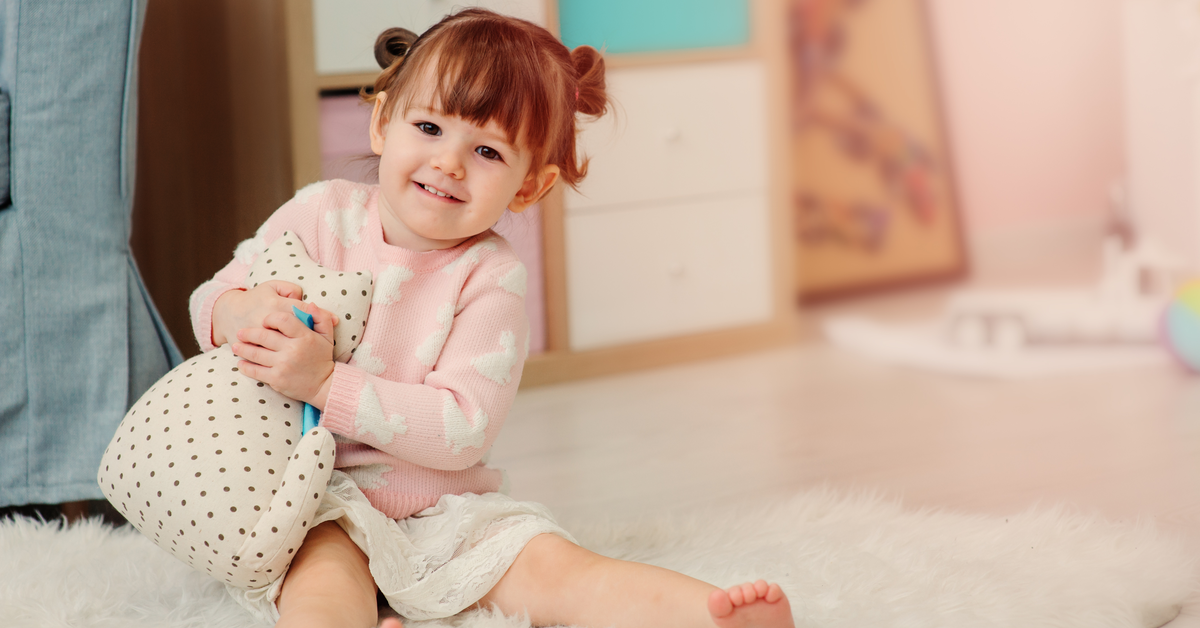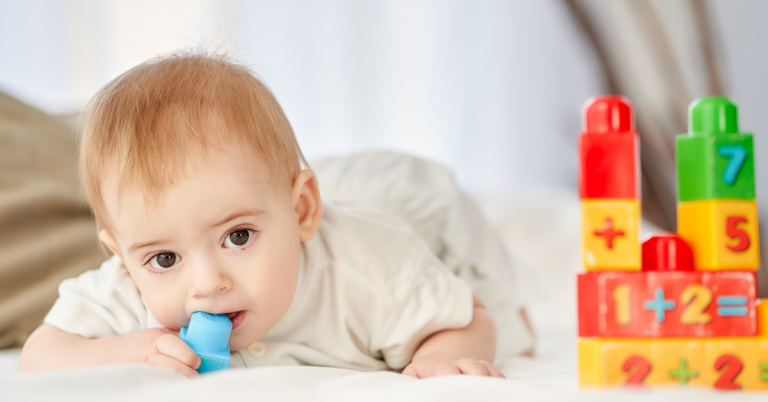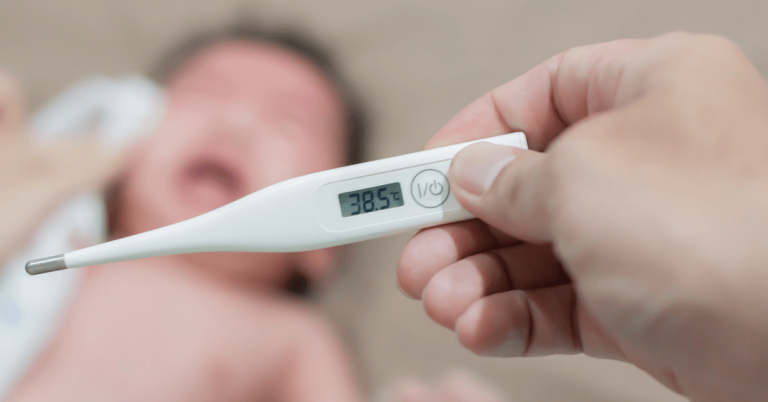Congratulations, your child is just over two and a half years old. A wonderful period awaits as your child takes firm steps from infancy to childhood. But is your child progressing well? To be sure about this, you need to understand the average development of children between thirty-one and thirty-three months. Child development consists of different areas: cognitive, physical, language, social and emotional development. They all form a whole and directly or indirectly influence each other. This article will look at the different aspects of development at this age.
Measurements between 31 and 33 Months
Avoid comparing the length and weight of your child with those of other children. Your toddler’s height and weight depend on factors such as nutrition, environment, illnesses, level of activity, genetics, etc. Nevertheless, a child’s weight and length must stay within the World Health Organization (WHO) limit values. You should regularly follow up on your baby’s physical development with your family doctor or paediatrician. If your child’s measurements diverge greatly from the standard, you need to consult a specialist because this may indicate other health problems and impact your child’s overall development. The table below shows the value ranges for weight, height, and head circumference.
31 Months
| Gender | Length | Weight | Head Circumference |
| Girl | 84.7 cm – 98.2 cm | 10.3 kg – 16.5 kg | 45.4 cm – 50.7 cm |
| Boy | 86.2 cm – 99.2 cm | 10.8 kg – 16.9 kg | 46.4 cm – 51.7 cm |
32 Months
| Gender | Length | Weight | Head Circumference |
| Girl | 85.4 cm – 99 cm | 10.4 kg – 16.8 kg | 45.5 cm – 50.8 cm |
| Boy | 86.8 cm – 100 cm | 10.9 kg – 17.1 kg | 46.5 cm – 51.8 cm |
33 Months
| Gender | Length | Weight | Head Circumference |
| Girl | 86 cm – 99.8 cm | 10.5 kg – 17 kg | 45.6 cm – 50.9 cm |
| Boy | 87.4 cm – 100.8 cm | 11.1 kg – 17.3 kg | 46.6 cm – 51.9 cm |
Tooth Development and Dental Care
Your child will likely have all his milk teeth by now. He can now brush his teeth twice daily, morning and evening, under your guidance. To help your little one gain the habit of brushing his teeth:
- Tell your child why brushing is important.
- Choose a cute baby brush in his favourite colour or with a picture of a character he likes and toothpaste suitable for his age.
- You need only a tiny smear of toothpaste at this age. Help your child while putting the toothpaste on his brush. Little ones tend to squeeze hard and put more toothpaste than necessary.
- First, brush all tooth surfaces yourself. Then ask your child to continue in the same way. Of course, do not leave him alone while doing this.
- Put some water in a plastic cup to rinse his mouth.
Physical Development
As your child grows, he gradually gains control over his muscles and develops fine and gross motor skills. The motor behaviours expected from a kid this age are as follows:
- Can run in a balanced manner.
- Climbs and descends stairs more easily than before and can even jump from a low step.
- Can easily throw and kick a ball.
- Is now more skilled at putting on his clothes. It’s still a little difficult to put on and take off upper clothing such as sweaters, t-shirts and tops, but it is easier to put on and take off sweatpants, trousers and skirts.
- Can jump with both feet off the floor and briefly balance on one foot. Jumping on a trampoline with a safety net will bring him great joy.
- At this age, children who enjoy drawing may start to draw recognisable shapes like circles. You may also be able to distinguish a tree from the people or cars he has drawn. If you help him, he can even start writing letters like “A” and “E.”
- When playing with play dough, he will now be able to make more beautiful and recognisable shapes.
Potty Training
This may be the right time if you haven’t started toilet training. Of course, your child must be ready both physically and psychologically. Signs that the time is ripe for toilet training are if your child stays dry for 1-2 hours during the day, wakes up in dry diapers some mornings, and tells you when he needs to poop or poops in a corner away from others.
Language Development and Speaking Skills
Besides his physical, motor, cognitive and social development, your little one will further improve his language skills. The milestones expected between thirty-one and thirty-three months are as follows:
- Your child has a vocabulary of 150 – 450 words, and he can now say almost all the words he knows. When you come across a word he doesn’t know, try to use it several times during the day. He will soon learn its meaning and even start using it correctly in a sentence.
- He can form longer sentences of three to four words.
- He makes fewer mistakes in pronunciation and sentence structure. Of course, he will still use baby talk. No matter how cute this is, don’t respond to your child in baby talk and pronounce the words and sentences correctly.
- Your little one can express himself better. He will get more involved in conversations and even express his opinion. The best part is that he will cry less as he can now better communicate his feelings.
- He not only uses words to communicate but also correct intonation and tone of voice. Moreover, when expressing different emotional states, he matches what he says with the right facial expressions, such as enthusiasm, surprise, fear, and joy.
- He can sing along to simple songs and nursery rhymes. A fun activity is to listen and sing along to children’s songs together. This strengthens your bond and enhances your little one’s vocabulary.
- Reading illustrated storybooks and telling fairy tales is great for stimulating language development. Children who have been read to frequently will enjoy this habit around this age.
Some children still struggle to make meaningful sentences at two and a half. This may cause them to exhibit aggressive behaviour or tantrums because they cannot express themselves well. Don’t worry. Individual differences in development are common. However, follow up on your child’s progress and, if necessary, talk to a speech therapist or healthcare professional.
Social and Emotional Development
A child’s physical and language development positively affects the acquisition of social and emotional skills and creates new opportunities for socialisation.
- Children largely learn social and emotional skills through imitation. This is how they discover the basic rules and behaviours in society. The most important role models are, of course, his parents. He carefully observes your actions, reactions, and mood changes. He will notice how you react when you are surprised or frown and mumble when angry. In the same way, your positive behaviour is his most important guide. For example, consistently thank your child for doing something for you or emphasise to knock the door before entering a room.
- It is possible that your child creates an imaginary friend around this age. Playing games and chatting with an imaginary friend is nothing to worry about. However, seek professional advice if this lasts for a long time and if it causes your child to become introverted and affects his social life by restricting his communication with other people.
- Be careful about the television programmes and cartoons you watch together, and make sure they are age-appropriate, as children cannot distinguish between fantasy and reality yet. Children may think they can jump like Spider-Man, causing accidents and serious injuries.
- At this age, children usually prefer to play individually or with adults or older children but may avoid playing with their peers.
Cognitive Development between 31 and 33 Months
Between thirty-one and thirty-three months, children begin to establish more meaningful cause-effect relationships and start thinking analytically. Cognitive milestones are:
- Although he can’t read yet, a child knows the meaning of certain symbols. For example, he realises that the car has stopped because the traffic light was red.
- Looking at the pages of a storybook he has read before, he can recount the story in simple sentences such as, “Little Red Riding Hood goes to her grandmother. She meets the wolf.”
- Can count to three. You can practice with counting games, videos and songs.
- Knows the basic colours.
- Can complete a shape sorter game with ease.
- Can complete an age-appropriate puzzle.
- Can order objects from large to small and vice versa.
Nutrition between 31 and 33 Months
Mealtimes at this age can be challenging. While he loved zucchini yesterday, today he may say, “Ugh, I don’t want this.” You may have a hard time deciding what to cook. It can be frustrating when you’ve put in so much time and energy, and he doesn’t want to eat it. Don’t take it personally and present the food in different ways. If he loved to eat diced zucchini one day, try julienne the next and bake it in the oven. Also, be daring and offer him a dish he didn’t like before. Perhaps he will like it today, after all.
Sleep between 31 and 33 Months
Your child’s sleep is getting more regular, and his uninterrupted sleep at night increases. At the same time, nap time will reduce. At this age, children generally sleep ten to eleven hours at night and one to two hours during the day, between eleven and thirteen hours in total.
Play and Activity Suggestions between 31 and 33 Months
Toddlers learn best through play. Enrich your child’s learning environment by offering games and activities suitable for his age. Play is also great for creating beautiful memories and strengthening your bond.
Classify
Categorising or classifying is a nice game to strengthen the association of objects, activities, and locations. Put objects of different categories on the floor, like clothes (trousers, sweaters, socks), bathroom items (toothpaste, toothbrush, towel), and kitchen items (plastic plate, spoon, whisk). Then, place as many containers as there are categories in front of your kid and let him categorise them by giving some simple instructions: “Let’s put the kitchen items in one container, the clothes in the second and the bathroom items in the third. And let’s then bring them to the room where they belong.”
Complete the caterpillar
A simple yet effective activity for counting, recognising, and sorting numbers is “Complete the Caterpillar.” Cut out some circles in a size that your child can easily handle. Draw a cute face on one of them for the caterpillar’s head. Write numbers from 1 to 3 or 1 to 5 in the other circles, depending on your child’s level. Then ask your little one to complete the caterpillar by arranging these numbers correctly.
Complete the face
Cut a face out of felt or cardboard. Then cut out other facial parts (the mouth, nose, eyebrows, eyes and ears), and paint them. Attach Velcro or double-sided tape on the back of each piece. Then attach the face to the wall. Ask your child to close his eyes and fix the facial features on the face without looking. He will find it funny when he sees a face with the mouth and nose in the wrong places. Then, ask him to “correct” the face with open eyes. Always accompany your child when he is going to the wall with his eyes closed to prevent unwanted accidents.
Developments in different areas influence each other but don’t happen all at the same time. For example, it is normal for a child’s language development to slow down a bit during rapid motor skill development. Moreover, all children are unique, and you should avoid comparing your child with other children. Rather, evaluate him, taking his own pace of development into account. However, it is important to seek professional advice if you think your child is behind in a certain developmental area.
Shopping Advice – What to Buy?
Your toddler’s attention span is gradually increasing, so you can buy books with slightly longer stories now and enjoy reading together. Your baby may also love to complete age-appropriate puzzles. Imaginary play is very important at this age. Plush toys, dolls, a play kitchen, a doll house, a Duplo set, etc. are all good options to stimulate this. And if you have some outdoor (or even indoor) space, a slide or swing will keep your little one active for hours. You can look at ebebek.com, read other parents’ comments, and buy them at affordable prices.
It’s Your Turn Now – Write a Comment!
How did you raise your baby between thirty-one to thirty-three-Month? What challenges did you experience? How did you overcome them? We welcome your comments so that other caregivers can learn.
Don’t Forget to Share!
Don’t forget to share our thirty-one to thirty-three-month baby development article so that expectant parents and other caregivers can read and learn!







